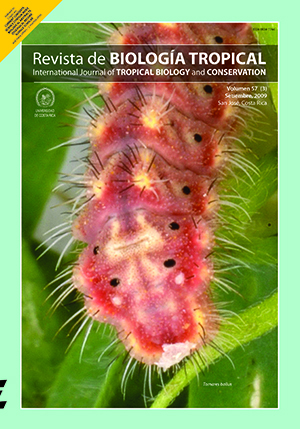Abstract
Basic aspects of the reproductive biology are largely unknown for most tropical tree species, although they are important elements to understand the impacts of anthropogenic activities as logging and forest fragmentation on these populations. In this study, data are presented on leaf and reproductive phenology, fruit production and seedling demography of a population of an endemic tree species of Southern Central America, Caryocar costaricense. This species has been affected by selective logging and forest fragmentation of its habitat. Phenology was studied by observation of 15-22 tree crowns during two reproductive periods (2003 and 2005). Circular plots were established around 11 adult trees to count the number of fallen fruits and seedlings during three years (2003, 2004, 2005). Although reproductive phenology is restricted to the short dry season in this species, seed germination occurred year-round. Fruit and seedling production shows a strong inter-individual variation within the study populations, with two large trees producing nearly 50%-70% of the fruits and seedlings during two years. Most of the seeds that fall beneath the tree crown are covered by litterfall or removed by fauna. We found evidence that many of these seeds become part of a seed bank in the forest floor. Because of the observed reproductive dominance of few large trees in these populations, we propose that selective logging on reproductive trees can severely impact the recruitment of this species.##plugins.facebook.comentarios##

This work is licensed under a Creative Commons Attribution 4.0 International License.
Copyright (c) 2009 Revista de Biología Tropical






